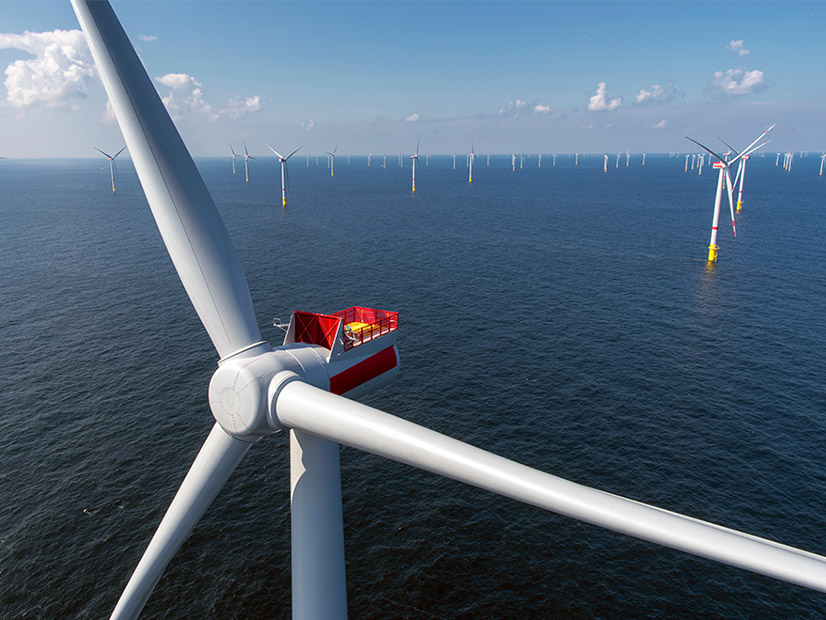Public Service Enterprise Group (NYSE:PEG) on Tuesday said that it expects to be out of the fossil fuel business by the first quarter of next year and is pursuing ways to help meet its commitment to decarbonize by 2030, including buying a share of another offshore wind project off the Jersey Shore.
CEO Ralph Izzo said the company’s 6,750 MW of fossil generation in New Jersey, Connecticut, New York and Maryland have “gotten a significant level of interest from numerous qualified buyers.” The selling process could be concluded by September, but he is willing to let it go into early 2022, he told analysts and reporters during the company’s second-quarter earnings call.
“I just don’t want to sacrifice value for an arbitrary deadline,” he said. PSEG closed its last remaining coal-fired power plant, a 400-MW facility in Bridgeport, Conn., on May 31.
The move, part of PSEG’s effort to transform into a primarily regulated electric and gas utility, follows the sale of its 467 MW of solar generation in 17 states, which closed in the second quarter. It also comes as the company seeks to meet its June 24 commitment to accelerate its greenhouse gas reduction efforts by 20 years and reach net-zero emissions by 2030. (See PSEG Speeds up Plan to Cut Emissions.)
Offshore Wind Opportunity
Other measures that will contribute to the net-zero goal include the company’s purchase of a 25% stake in the Ocean Wind offshore wind project, Izzo said. The $1.6 billion facility developed by Ørsted, which was approved in 2019, is the first offshore wind project off the coast of New Jersey. PSEG’s investment in the project closed in the second quarter, and the company is mulling investments in other East Coast projects, including Ocean Wind 2, Izzo said.
The New Jersey Board of Public Utilities (BPU) on June 30 awarded Ocean Wind 2 and Atlantic Shores, the rights to 1,100 MW and 1,510 MW, respectively, in the state’s second offshore wind solicitation. The latter project is a 50/50 partnership between Shell New Energies and EDF Renewables North America.
“It is obviously safe to conclude that we will have some conversations with Ørsted about” Ocean Wind 2, Izzo said. He added, however, that “we have a range of conversations across several projects that are in the Mid-Atlantic region underway with Ørsted.”
But owning another share of an offshore wind project is less lucrative than providing the infrastructure for transmission services from the projects to the grid, he said. PSEG is preparing to bid on a competitive process to provide transmission infrastructure for the farms, Izzo said.
The BPU in April launched a solicitation for potential transmission solutions to deliver offshore wind energy to the grid as the state rolls out its plan to deploy 7,500 MW of offshore wind energy by 2035. (See New Jersey Seeks OSW Transmission Ideas.) The initiative will be conducted with PJM, which will provide the technical expertise, and the BPU will make the final decision.
“The potential projects can cover onshore upgrades, new onshore transmission connection facilities, new offshore transmission connection facilities and a networked offshore transmission system,” Izzo said. He said his company initially believed the solicitation had the potential to yield a nine-figure investment in transmission infrastructure, and now believes it could be a 10-figure investment.
“All of this is great progress in our decarbonization efforts and continues to demonstrate our alignment with the state’s clean energy agenda and our industry leadership on environmental stewardship,” he said.
Nuclear Subsidies
Another sign of the company’s contribution to that goal was the BPU’s award on April 26 of a three-year extension of annual $10/MWh subsidies, known as zero-emission certificates (ZECs) to three nuclear plants in the state, which are owned or part-owned by PSEG.
Izzo said the company is also pushing for a federal nuclear production tax credit and is monitoring discussions of a potential nuclear grant program to be administered by the U.S. Department of Energy.
The extension of the ZECs to PSEG “will allow us, along with stakeholders in New Jersey and at the federal level, the time we need to work on a long-term economic solution to keep our merchant nuclear fleet economically viable and preserve its currently unmatched contribution of reliable carbon-free baseload generation, the most cost-effective clean generation source available,” Izzo said.
The CEO said he also was pleased with subsidiary Public Service Electric and Gas’ recent agreement with the BPU and Division of Rate Counsel to voluntarily reduce its annual transmission revenue requirement, which includes a reduction in its base return on equity from 11.18% to 9.9%.
“This agreement is a balanced resolution that delivers timely savings to customers and resolves a significant regulatory uncertainty for PSE&G,” Izzo said in a statement. “Pending approval from the Federal Energy Regulatory Commission, the settlement is anticipated to save a typical electric residential customer approximately 3% on their monthly bills upon implementation.”
PSEG reported a net loss of $177 million ($0.35/share) for the second quarter, a drop from $451 million ($0.89/share) in the same quarter of 2020. Non-GAAP operating earnings for the second quarter of 2021 showed a more positive picture: $356 million ($0.70/share) compared to $404 million ($0.79/share) in 2020.
Izzo said in the statement that the GAAP figures “reflect an asset impairment charge related to the quarterly assessment of the likelihood and timing of potential asset sales in connection with exploring strategic alternatives for PSEG Power’s non-nuclear generating assets.” These included the sale of the solar business and potential sale of the fossil assets, he said.


